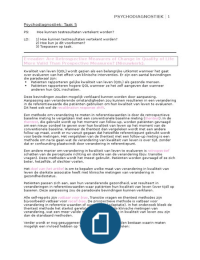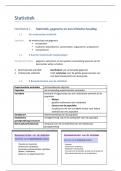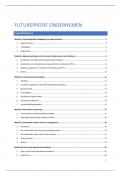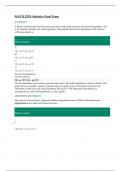Introduction:
- Define Oligopoly
- Define Bertrand Model of Oligopoly: firms choose price they sell at as a strategic variable
and don’t compete based on output choice
Main Body:
- Discuss Oligopoly General Assumptions:
- Bertrand specific assumptions:
1. Two duopolists in market A+B who choose the level of price they sell at and make pricing
decisions simultaneously; different to Cournot in that compete on price not quantity
2. Entry in market is completely blocked; hence we only consider firms already in the
market
3. Firms have the same constant marginal costs and no fixed costs: means that TCa = TVCa
and Aca = MCa; normally MC and AC are U shaped however now they are constant;
hence now means any price above MC = supernormal profits and p = MC is normal profit
4. Firms produce homogeneous products which cannot be horizontally or vertically
differentiated; hence buyers will purchase from the cheapest seller, if one seller is
cheaper than the other they get all the buyers however if both set same price they both
get half the buyers
5. Market demand is Q = a – P where a>0 and P is the lowest price from firm A and B; a is a
positive parameter above which no quantity is demanded
- Under Bertrand model there is a Nash equilibrium when no firm wants to change its price
holding the other firms price constant; If firm A sets Pa*, firm B will profit maximise by
setting price Pb* and vice versa
- Best Response functions for Bertrand:
- Pa=Pb line is 45 degree line showing all points
where both firms price the same and helps to
show the symmetry in action of pricing of both
the duopolists
- Ra shows that for any given price of Firm B, what
price Firm A should set in order to maximise its
profits and vice versa for Rb
- Nash equilibrium is at e as here no firm will want
to change its price; both are setting the same
price; point is on both firms’ best response
functions
- To find why the response functions have this
shape we again use the marginal output rule and
start by finding one of the firms’ demand curves; to try and find MR from AR i.e. the demand
curve and we already know what MC is so we can use the rule once MR is found
- Firm specific demand curve is the demand curve of a firm given its rival sets a particular
price
- Shape of firm specific demand curve for A is due to the assumptions we’ve made in that any
price above B then A gets no consumers, if Pa=Pb then both get half the consumers of
market and if A sets a lower price then B then it will get all the consumers; draw on MR
curve from this and then put in the constant MC and then use marginal output rule for
several different firm B prices in order to derive the best response function of A
- Define Oligopoly
- Define Bertrand Model of Oligopoly: firms choose price they sell at as a strategic variable
and don’t compete based on output choice
Main Body:
- Discuss Oligopoly General Assumptions:
- Bertrand specific assumptions:
1. Two duopolists in market A+B who choose the level of price they sell at and make pricing
decisions simultaneously; different to Cournot in that compete on price not quantity
2. Entry in market is completely blocked; hence we only consider firms already in the
market
3. Firms have the same constant marginal costs and no fixed costs: means that TCa = TVCa
and Aca = MCa; normally MC and AC are U shaped however now they are constant;
hence now means any price above MC = supernormal profits and p = MC is normal profit
4. Firms produce homogeneous products which cannot be horizontally or vertically
differentiated; hence buyers will purchase from the cheapest seller, if one seller is
cheaper than the other they get all the buyers however if both set same price they both
get half the buyers
5. Market demand is Q = a – P where a>0 and P is the lowest price from firm A and B; a is a
positive parameter above which no quantity is demanded
- Under Bertrand model there is a Nash equilibrium when no firm wants to change its price
holding the other firms price constant; If firm A sets Pa*, firm B will profit maximise by
setting price Pb* and vice versa
- Best Response functions for Bertrand:
- Pa=Pb line is 45 degree line showing all points
where both firms price the same and helps to
show the symmetry in action of pricing of both
the duopolists
- Ra shows that for any given price of Firm B, what
price Firm A should set in order to maximise its
profits and vice versa for Rb
- Nash equilibrium is at e as here no firm will want
to change its price; both are setting the same
price; point is on both firms’ best response
functions
- To find why the response functions have this
shape we again use the marginal output rule and
start by finding one of the firms’ demand curves; to try and find MR from AR i.e. the demand
curve and we already know what MC is so we can use the rule once MR is found
- Firm specific demand curve is the demand curve of a firm given its rival sets a particular
price
- Shape of firm specific demand curve for A is due to the assumptions we’ve made in that any
price above B then A gets no consumers, if Pa=Pb then both get half the consumers of
market and if A sets a lower price then B then it will get all the consumers; draw on MR
curve from this and then put in the constant MC and then use marginal output rule for
several different firm B prices in order to derive the best response function of A








